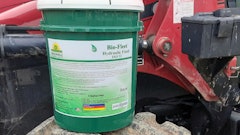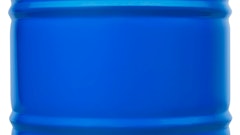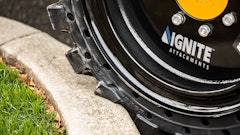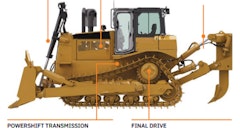The primary purpose of engine oil is to stop metal from touching metal. When metal surfaces come in contact, they grind together causing friction. That creates heat, stress and wear.
Engine oil is used to reduce friction by creating a slick film between metal parts that lets them glide over one another.
An oil's viscosity - a measure of its resistance to flow, along with the pressure and speed of movement, determines the thickness of the oil film between two moving surfaces. This, in turn, determines the ability of the oil film to keep the surfaces apart, the rate heat is generated by friction and the rate the oil flows between the surfaces to convey the heat away.
Engine oils are commonly referred to as "thick" - having a high viscosity - or "thin" - having a low viscosity.
According to oil manufacturers, an oil should have a viscosity at the operating temperature that is correct for maintaining a fluid film between the engine surfaces.
Changes in an engine oil's viscosity can affect the oil's lubricating (protecting) ability. If too thin or thick, more friction and drag will be created, resulting in premature wear and failure.
Engine oil classification
Engine oils are classified and rated in order to establish quality levels and appropriate applications for those oils.
For automotive applications in the U.S., engine oils are generally classified by their API (American Petroleum Institute) and SAE (Society of Automotive Engineers) ratings.
Under the API classification system, oils designed for gasoline engines are designed by an "S." Oils appropriate for diesel engines are indicated by a "C."
The SAE rating specifies the viscosity of an oil to flow at certain temperatures. The higher the number, the thicker the oil.
Oil grades
There are two common types of SAE classifications: monograde and multigrade.
A monograde oil (also called single grade), such as SAE 30, is designed to be used within a defined temperature range.
Multigrade oils are formulated to give the oil the flexibility to lubricate effectively over a wider temperature range than monograde oils.
By way of example, with an SAE 10W-30 oil, the "W" stands for "winter" and indicates that the oil meets certain viscosity requirements for operation in low temperature.
The number in front of the "W" indicates the low temperature viscosity. This number refers to the viscosity of the oil when the engine is cold, and indicates the oil's performance when the engine is starting up.
The thinner the oil when cold, the quicker it moves around the engine and the faster it protects vital engine components.
The second number, "30," is the high temperature viscosity.
When comparing viscosity numbers, a higher number will not flow as easily as a low number.
An oil displaying the API certification mark and service symbol identify quality motor oils for gasoline- and diesel-powered vehicles that meet performance requirements set by U.S. and international vehicle and engine manufacturers and the lubricant industry.
Some motor oils may also contain a resource conserving or energy conserving rating from the International Lubricant Standardization and Approval Committee (ILSAC) - a joint effort of U.S. and Japanese automobile manufacturers. These designations apply to oils intended for gasoline engines for light duty vehicles.
Lighter grade oils
The reasons to switch to using lower viscosity, full synthetic or synthetic blend engine oils continue to build, says Dan Arcy, OEM technical manager for Shell Lubricants. "The tried and true SAE 15W-40 conventional engine oils that many use has competition from lower viscosity grade oils that promote better fuel economy and other benefits."
Thicker oils make it easier to maintain oil pressure and reduce the tendency for oil consumption, particularly in worn engines, he notes. Thick oils trade off fuel efficiency to achieve this as the engine has to work harder to move the oil around.
Resource or energy conserving engine oils are lighter viscosity oils. They are intended to maximize energy efficiency for improved fuel economy through the use of additive packages that reduce drag, friction and energy losses.
"A number of diesel engine manufacturers recommend lower viscosity lubricants in their newest engines, and the move to lower viscosity lubricants is reinforced by the recent announcement that one of the focus areas for the next generation of heavy duty diesel engine oils will be fuel economy savings, which lower viscosity oils have demonstrated the ability to provide," says Arcy. "This is particularly important as the first-ever fuel economy regulations for heavy trucks will begin in 2014."
Less energy is consumed when starting a cold engine that is lubricated by a synthetic SAE 5W-40 compared to than is consumed with a conventional SAE 15W-40, he says.
"Synthetic engine oils are formed by a variety of chemical processes that modify the oil molecules to a structure that will better resist higher engine heat and offer better cold temperature performance," explains Arcy. "The synthetic oil will have a lower viscosity and thicken less at cold temperatures, which allows it to flow quickly under cold climate conditions.
"Synthetic engine oil, like mineral oils, helps keep the engine clean through improved sludge, deposit and varnish protection, and helps provide overall engine wear under extreme operating conditions.
"Synthetic engine oils typically have more stable viscosity control and provide better protection when the engine is running under high temperature and high stress conditions, such as high speeds and heavy towing."
Just like with conventional engine oil, as the engine heats up, the viscosity of a synthetic engine oil will change to adapt to the higher operating temperatures, he notes. The SAE 5W-40 synthetic oil will change less than conventional oil as heat increases and will offer improved high temperature viscosity protection.


















